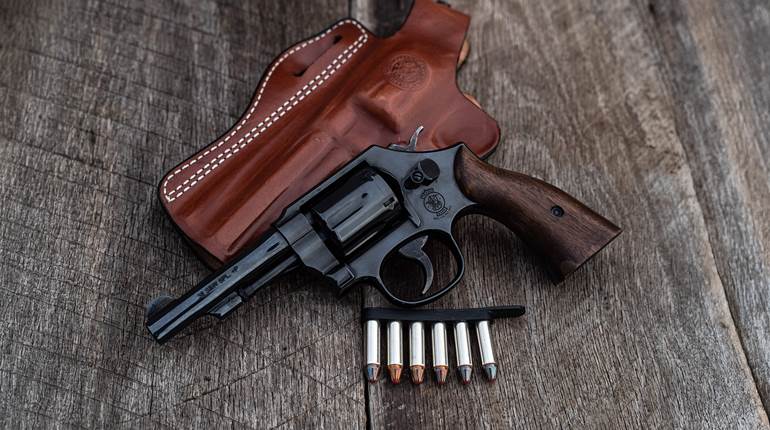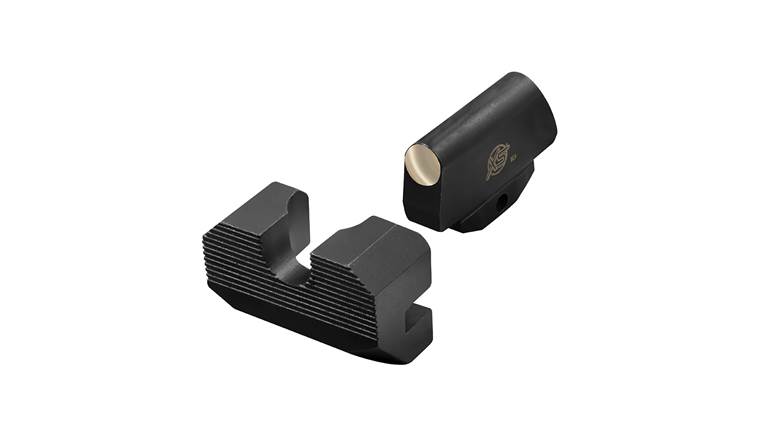
Image courtesy NRAMuseum.org
When some of our ancestors got ticked off and fired upon Fort Sumter on April 12, 1861, they were likely reacting emotionally rather than practically. You see, the Confederacy, while having a tremendous amount of grit and determination, was equally vapid of manufacturing capabilities to produce enough arms and ammunition to prosecute a revolt. Colt and Remington were building their respective revolvers at a breakneck pace, but virtually all of them went to the Union forces. Samuel Colt had toyed with the idea of establishing a distribution facility in the South before hostilities arose, but, alas, he was a bit slow in completing that task. The Union sealed the border between North and South, prohibiting the passage of arms across it soon after the April 12 outbreak. It is one thing to pick a fight; quite another to see it through.
Enter one James H. Burton, who was educated at the Westchester Academy in Pennsylvania; then progressing to Baltimore, Md., at age 16 whereby he learned the machinist trade. In April 1844, Burton was hired on as a machinist at the Harpers Ferry Armory. Apparently he had a flair for design and manufacture because he soon was promoted to foreman of the rifle factory machine shop.
The Virginia assembly passed a bill on January 21, 1860 reviving the old Virginia Manufactory of Arms, which had been vacant for 38 years, renaming it the Richmond Armory. Soon the J.R. Anderson & Company was awarded a contract to stock machinery for the reactivated manufactory and hired Burton to engineer the Richmond Armory contract. Burton made a trip back to Harpers Ferry to get model rifled musket patterns and components for his new employer and returned with a large collection of drawings.
By the middle of 1861, Burton was superintendent of the Richmond Armory. His thorough familiarity with the machinery for manufacturing firearms was a substantial asset to the Confederacy.
Then, Burton received a commission as Lieutenant Colonel in the Confederate army in December 1861. His responsibility was to see to it that Confederate soldiers were well armed. He partnered with Edward N. Spiller and David J. Burr, two wealthy Virginia businessmen, to found the private manufacturing firm of Spiller & Burr. A lucrative contract was awarded to the company to supply the Confederacy with 15,000 revolvers within 2 1/2 years at a cost of $25 to $30 each in Confederate dollars. The contract stipulated that the revolvers be what we would now call a clone of the 1836, .36-cal., Colt Navy revolver, as adopted as the issue revolver by the Confederacy. Burton, however, felt there was a better revolver.
He managed to convince the Confederate Chief of Ordnance that the Whitney revolver would be a better choice. This pistol—a newer version of Eli Whitney, Jr.’s .36-cal., percussion revolver, patented in 1854—featured a solid frame and was easier and less expensive to manufacture than the Colt. Whitney’s pistol is very close in design and form to the 1858 Remington. There were twelve First Model, First Type revolvers submitted to the Confederate Ordnance Department for inspection and acceptance in Richmond. A second lot of 40 First Model, Second Type were sent to the Macon Armory in Macon, Ga., in April 1863 for acceptance. Of these, 33 were found to be unserviceable and were returned to Spiller & Burr. As of now, there are only three known examples of the First Model, First Type in existence. Subsequent revolvers were dubbed First Model, Second Type. The principal difference is that in the Second Type the front of the frame is thickened a bit so that it covers the barrel threads completely. By far, most surviving examples of the Spiller & Burr revolver are of the Second Type.
The poached design—the pistol was still being manufactured by Whitney in New Haven, Conn.—had a 7 5/8”, blued steel, octagonal barrel screwed into the brass frame. A blockade by the Union prevented much needed supplies like steel from getting to the South. Brass had to be substituted for steel because of availability and speed of manufacture. The front sight was a brass pin attached to the barrel just short of the muzzle. Rifling consisted of seven lands and grooves. Its loading lever was held in place by a spring-and-ball latch on the barrel. The rammer passed through the frame, which had an angled clearance flute allowing the insertion of powder and ball. A moon-shaped cut on the right side of the recoil shield provided the space needed for capping the six-shot cylinder. Grip straps were integral with the frame, and the grips were of black walnut. A groove was cut in the top strap serving as a rear sight. To restrain the cylinder axis pin, a thumb-bolt was located on the left side of the frame. Individual screws served as an axis for the hammer, trigger and cylinder-axis pins. While the original Whitney revolver had a cylinder made of steel, the Spiller & Burr iteration utilized iron. To strengthen the iron cylinders, the iron bars from which the cylinders were made were heated and twisted, thus preventing any chamber from being in parallel alignment with a fault line in the bar iron. The nipples are set into threaded holes bored at an angle from each chamber.
Interestingly, the trigger guard is not integral with the frame, but it is of brass. At first the frame was plated in silver, as was the Whitney with their iron frames, but as the war took its toll, plating ceased. The 2½ lb. pistol was just a bit more than 13” long.
While Spiller & Burr’s contract called for 15,000 copies, the aforementioned material shortages due to a naval blockade only allowed some 1,451 to be made. It is reported that some of the later production Spiller & Burrs had frames made from a bronze alloyed from copper, zinc and lead, along with a scant amount of nickel. This alloy became known as valve bronze. Because of this, most pistols used during the war were Colts and Remingtons either from personal arms owned before the war or those picked up on the battlefield.
Toward the end of 1861, it seemed prudent to move the plant in Richmond deeper into Confederate territory. The powers thought that by moving the manufacturing facility to Macon, Ga., it would be better protected. However, they never dreamed of William Tecumseh Sherman. When Sherman took Atlanta, Spiller & Burr quietly moved as much of their manufacturing facility as they could to Savannah.
Overall, collector interest is pretty intense—no surprise, since any memorabilia from the “War Between the States” will fetch big bucks. An original Spiller & Burr revolver will command between $4,000 and $20,000 in today’s market. Those who hanker to shoot Confederate pistols or reenact battles can acquire serviceable Italian-made replicas for about $275.






































